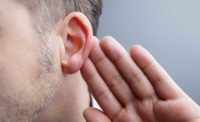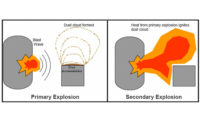An estimated twenty-two million workers are exposed to potentially damaging noise at work each year1. For employers, worker exposure to damaging noise could result in catastrophic penalties and compensation for hearing loss disability.
OSHA claims that “an estimated $242 million is spent annually on workers’ compensation for hearing loss disability” with noise-induced hearing loss (NIHL) affecting nearly one in four adults in the United States2.
Employer responsibility
NIHL is preventable, but the effect is permanent, resulting in life changing injuries that can seriously impair a workers’ quality of life. Thousands of construction workers suffer hearing loss from excessive noise exposure on the job every year. According to a study spanning a decade of research, construction accounted for the second-highest prevalence of workers with a hearing impairment, with at least 1 in 5 self-reporting hearing trouble.3
Despite having a duty of care to protect employees from workplace hazards that can cause injury or illness, employers have no obligation to test workers’ hearing (audiometric testing) in construction, even if noise exposure levels exceed OSHA’s Permissible Exposure Limit (PEL).4 For this reason, hearing loss is rarely recognized as an “occupational disease” in construction. The Bureau of Labor Statistics (BLS) reports that hearing loss is underreported due to this fact, and for this reason hearing loss data for the construction sector is not comparable with data for general industry.5 However, the repercussions to the employer if they do not seriously consider the auditory welfare of their workforce can be significant, leading to huge pay outs in compensation benefits to employees.
Why monitor for noise exposure
OSHA sets the legal limits on noise exposure in the workplace based on a worker’s time weighted average over an eight hour day. OSHA’s maximum permissible exposure limit to noise is 90 dBA (decibels) for all workers for an eight hour day, minimizing the risk of occupational noise induced hearing loss. Conversely, the National Institute for Occupational Safety and Health (NIOSH) recommends that all worker exposure to noise should be controlled below or equivalent to the level 85 dBA Recommended Exposure Limit (REL) for eight hours. Although NIOSH recommendations are designed to represent best scientific practice concerning noise exposure, the OSHA exposure limit is regulatory and the law that must be complied with.
In 1981, OSHA introduced a new regulation requiring employers to implement a hearing conservation program for workers that are exposed to an average noise level of 85 dBA or higher for an eight-hour shift. Hearing Conservation Programs require employers to measure noise levels, provide free annual hearing exams and hearing protection, provide training, and conduct evaluations of the adequacy of the hearing protectors in use; unless the employer makes sufficient changes to tools, equipment and schedules so that conditions are less noisy and worker exposure is less than the 85 dBA.
To ensure you adhere to OSHA regulations, monitoring provides accurate insights into the noise levels of a working environment, identifying where the problem areas are. There are many monitoring devices on the market, but it can be difficult to identify what type of product is most suitable for your working environment, and where training is required. A successful noise monitoring program can be carried out on-site, by trained health and safety managers, using either a sound level meter or a dosimeter.
How to: sound level meters
A sound level meter is a handheld device, enabling measurements to be taken at the ear with the instrument pointing at the noise source. This process must be repeated for both ears, for all duties employees perform, making it possible to calculate an accurate record of daily exposure. Settings on these meters can be adjusted according to the type of noise being assessed.
When using a sound level meter, measurements must be started at the beginning of a task, representing workers’ actual exposure. If workers are likely to be exposed to high levels of impulsive noise, emitted from heavy pressing operations or sheet metal working, peak noises must be measured for accurate results and compared to peak action levels.
If individual working patterns are irregular, if the worker is highly mobile, or if the work carried out means it is not practical or safe to conduct noise monitoring with a sound level meter, noise dosimeters can be used. These are small, body mounted devices that collect individual exposure data.
Dosimeters are worn by employees for their entire working shift. Data is logged instantly, and when downloaded onto another device, details the time history of the noise exposure, highlighting where high exposures occur throughout the day. Workers can also make a diary of times and jobs performed, allowing the employer to see the operations that require more effective noise controls.
Protecting your future workforce
The statistics of workers in the United States exposed to potentially damaging noise at work each year is concerning. What is equally concerning is some employers’ disregard of NIHL as an occupational disease, particularly in construction where it poses a major risk. Employers have a crucial responsibility to protect workers’ health from being damaged, and to upskill their workforce so they realize the implications of damaging noise exposure. Monitoring solutions, like handheld sound level meters and noise dosimeters, are an ideal solution for you and your organization to achieve compliance with government standards and protect to your workforce effectively and demonstrably.



